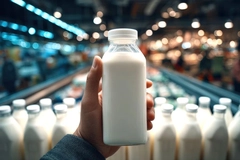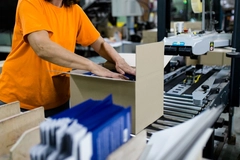Zero Waste Europe stresses beverage packaging reuse essential for European net zero targets

22 Jun 2023 --- The European beverage container industry is unlikely to meet 1.5 degrees Celsius climate targets and is at risk of missing its net zero plans without swift intervention, finds Zero Waste Europe (ZWE).
Larissa Copello, ZWE’s Packaging & Reuse policy officer, tells us that the investigated materials, aluminum, PET and glass products, face significant challenges in decarbonization, posing a risk to achieving net-zero emissions by 2050.
“They all require significant technological investment to transition toward net zero, and reducing material demand should be a top priority. In this sense and despite all the opposition we have seen to reuse targets, they appear to be the most promising approach to get the European packaging industry on the path to net zero.”
ZWE commissioned Eunomia Research & Consulting to investigate the net zero pathways for aluminum, PET and glass products used in EU drinks packaging.
Single-use glass is the most significant contributor to carbon emissions, finds ZWE (Image credit: ZWE).Glass has highest energy consumption
The “Decarbonisation of single-use beverage packaging: Investigating 1.5°C future by 2050” report found that all three materials are projected to exceed their allocated carbon budget by at least 50%.
Single-use glass is the most significant contributor (200% exceedance) to carbon emissions, followed by PET (150%) and aluminum (50%). Collectively, they face significant challenges to stop or reduce GHG emissions due to their manufacture, posing a risk to achieving net zero emissions by 2050.
“The reason why the decarbonisation challenges for glass are higher than for aluminum or PET is because of the high energy consumption associated with its production but also the comparatively high energy consumption in its recycling,” explains Copello.
“For instance, aluminum is also very energy intensive to produce per metric ton, but a can weighs ten to 15 times less than a bottle and uses much less energy to be recycled, making it a better choice.”
PPWR revision suggestions
The research and its findings have further relevance in the current revision of the EU Packaging and Packaging Waste Regulation (PPWR). Aline Maigret, head of policy at ZWE, explains: “Glass’ incredibly high carbon footprint makes it unsuitable for single-use applications. The new PPWR should plan a material transition away from single-use in general, focusing on glass and PET.” The new PPWR should plan a material transition away from single-use, focusing on glass and PET, says Maigret.
The new PPWR should plan a material transition away from single-use, focusing on glass and PET, says Maigret.
Copello adds that the current PPWR proposal sets different performances for different materials, which are more favorable to the least environmentally friendly ones.
“For instance, single-use glass is exempted from joining DRS, having to meet the 90% separate collection target or recycled content is only requested for plastic. Hence, a first step would be to create a level playing field for all the materials with the same collection targets and recycled content.”
The Packaging & Reuse policy officer explains that it is necessary to set up material-specific waste prevention targets proportional to the environmental impact per unit basis to phase out the most environmentally damaging options.
Simon Hann, principal consultant at Eunomia Research & Consulting and lead report author, stresses: “It is crucial that we prioritize long-term decision-making and acknowledge that the process of achieving net zero is as significant as the timing.”
“When examining beverage containers, it becomes evident that we need to adopt a more strategic approach to decision-making that takes into account future implications. Our findings indicate that justifying the continued use of single-use glass, in particular, will become progressively more difficult, despite the obstacles faced by alternative materials.”
By Natalie Schwertheim











